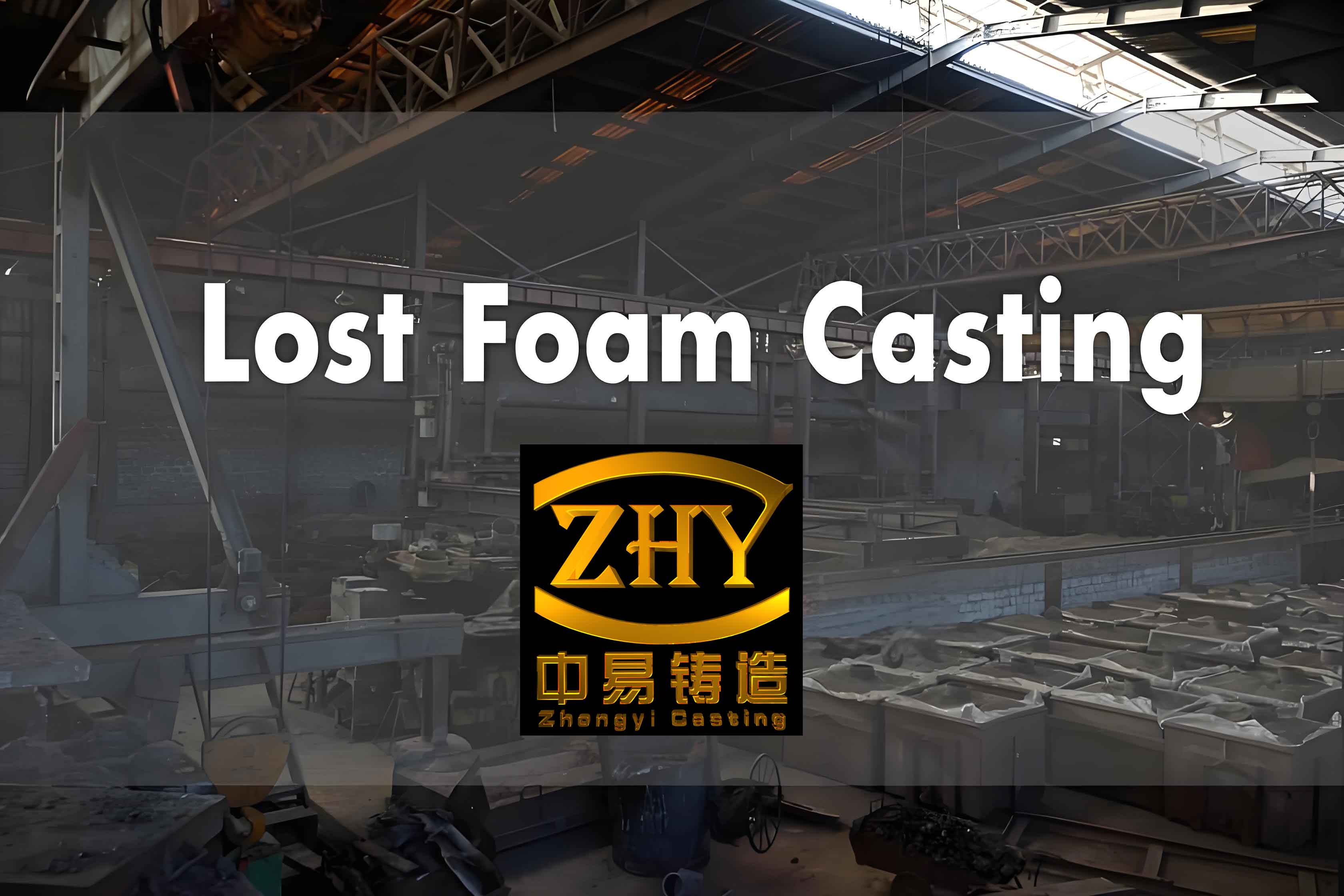As modern industries rapidly evolve, the demand for high-precision, high-performance cast components has outpaced the capabilities of traditional casting methods. Lost foam casting (LFC), an innovative technique utilizing expandable foam patterns, has garnered significant attention due to its simplicity, cost-effectiveness, and suitability for complex geometries. This article synthesizes advancements in Lost foam casting sub-processes—vacuum and low-pressure Lost foam casting, vibration-assisted Lost foam casting, and expendable pattern shell casting—alongside simulation technologies. Future directions for optimizing process parameters, enhancing automation, and integrating multi-technology approaches are also explored.

1. Current Advancements in Lost Foam Casting Processes
1.1 Vacuum and Low-Pressure Lost Foam Casting
Vacuum and low-pressure Lost foam casting combines vacuum-assisted degassing with controlled pressure to improve mold filling and reduce defects like porosity and oxidation. Key findings include:
- Enhanced Microstructure: Vacuum low-pressure Lost foam casting refines grain structures in aluminum alloys (A356), reducing porosity from 1.97% (conventional Lost foam casting) to 0.16% and increasing tensile strength by 20.2% (278.27 MPa) (Table 1).
- Surface Quality: Surface roughness decreases to 3.2–6.3 μm compared to 6.3–12.5 μm in standard Lost foam casting.
- Parameter Sensitivity: Gas flow rate, casting temperature, and vacuum level critically influence filling efficiency. Empirical relationships, such as:
L=k1⋅Q+k2⋅T+k3⋅PL=k1⋅Q+k2⋅T+k3⋅P
where LL = filling length, QQ = gas flow rate, TT = temperature, and PP = pressure, guide parameter optimization.
Table 1: Performance comparison of vacuum low-pressure lost foam casting vs. conventional lost foam casting
| Parameter | Vacuum Low-Pressure Lost Foam Casting | Conventional Lost Foam Casting |
|---|---|---|
| Porosity (%) | 0.16 | 1.97 |
| Tensile Strength (MPa) | 278.27 | 231.40 |
| Surface Roughness (μm) | 3.2–6.3 | 6.3–12.5 |
Challenges persist in precise parameter control, necessitating advanced automation systems like PLC-based pressure tracking to minimize errors.
1.2 Vibration-Assisted Lost Foam Casting
Mechanical or ultrasonic vibrations are applied during mold filling to refine microstructures and enhance mechanical properties. Critical insights include:
- Grain Refinement: Vibration frequencies between 50–100 Hz reduce intermetallic layer thickness in Al/Mg bimetal composites by 30%, improving elongation by 166.4%.
- Frequency-Dependent Effects: For gray cast iron, tensile strength peaks at 80 Hz (320 MPa) but declines at higher frequencies due to excessive turbulence (Figure 1).
σ=σ0+A⋅f⋅e−B⋅fσ=σ0+A⋅f⋅e−B⋅f
where σσ = tensile strength, σ0σ0 = baseline strength, ff = frequency, and A,BA,B = material constants.
Table 2: Impact of vibration frequency on HCCI (High Chromium Cast Iron)
| Frequency (Hz) | Hardness (HRC) | Porosity (%) |
|---|---|---|
| 50 | 58 | 1.2 |
| 100 | 62 | 0.8 |
| 150 | 60 | 1.5 |
While cost-effective, improper amplitude or frequency selection can induce defects like cold shuts.
1.3 Expendable Pattern Shell Casting
This hybrid technique merges lost foam casting with investment casting, coating foam patterns with refractory materials to achieve superior dimensional accuracy. Notable results:
- Filling Dynamics: Gas flow rate contributes 45% to filling efficiency, followed by temperature (30%) and vacuum (25%).
- Performance Metrics: ZL101 alloy castings exhibit a 15% increase in yield strength (210 MPa) under 100 Hz vibration.
η=QactualQtheoretical∝ΔP⋅tμη=QtheoreticalQactual∝μΔP⋅t
where ηη = filling efficiency, ΔPΔP = pressure differential, tt = time, and μμ = viscosity.
Table 3: Key parameters in expendable pattern shell casting
| Parameter | Optimal Range | Influence on Quality |
|---|---|---|
| Gas Flow Rate | 8–12 L/min | High |
| Vibration Frequency | 80–120 Hz | Moderate |
| Vacuum Level | 0.04–0.06 MPa | Critical |
2. Simulation Technologies in Lost Foam Casting
2.1 Filling Process Simulation
Computational fluid dynamics (CFD) models predict metal flow, foam degradation, and defect formation. For instance, simulations of A356 aluminum motor housings reduced trial iterations by 40% using the Navier-Stokes equations:ρ(∂u∂t+u⋅∇u)=−∇P+μ∇2u+Fρ(∂t∂u+u⋅∇u)=−∇P+μ∇2u+F
where ρρ = density, uu = velocity field, PP = pressure, and FF = external forces.
Table 4: Simulated vs. experimental results for reducer box casting
| Defect Type | Predicted Occurrence | Actual Occurrence |
|---|---|---|
| Slag Inclusion | 12% | 10% |
| Gas Porosity | 8% | 9% |
2.2 Solidification Process Simulation
Thermal models optimize cooling rates to minimize shrinkage. For hypereutectic high-chromium iron, a cooling rate of 12°C/s reduced porosity by 60%:∂T∂t=α∇2T+Qρcp∂t∂T=α∇2T+ρcpQ
where TT = temperature, αα = thermal diffusivity, QQ = latent heat, and cpcp = specific heat.
Table 5: Cooling parameters and defect correlation
| Cooling Rate (°C/s) | Shrinkage Porosity (%) |
|---|---|
| 8 | 2.1 |
| 12 | 0.9 |
| 16 | 1.4 |
3. Future Directions
- Multi-Technology Integration: Combining lost foam casting with additive manufacturing for complex foam patterns.
- AI-Driven Optimization: Machine learning to predict defects and automate parameter adjustments.
- Sustainability: Reducing binder usage in shell coatings and recycling degraded foam.
Conclusion
Lost foam casting has demonstrated remarkable progress through hybrid processes and advanced simulations. Vacuum low-pressure lost foam casting excels in precision, vibration-assisted methods enhance mechanical properties, and shell casting achieves high-dimensional accuracy. Future innovations will rely on interdisciplinary collaboration to address parameter control challenges and expand industrial applications.
